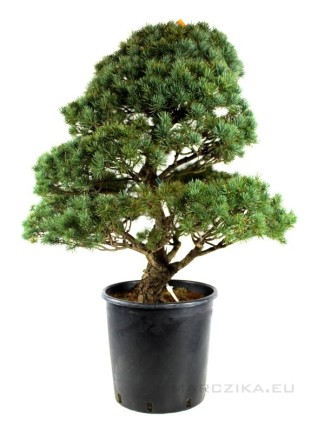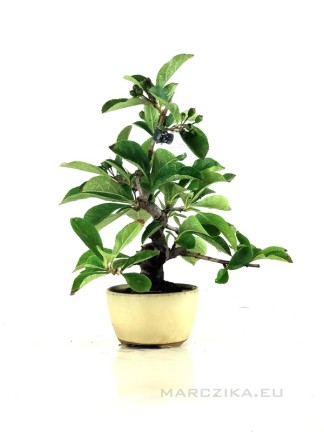Pinus thunbergii - Japanese blackpine in moyogi style
Item number: 13641
Status: In stock
Pinus thunbergii, belonging to the Pinus genus, is colloquially known as the Japanese black pine. This beautiful plant bears the features of the Moyogi style, accompanied by delicate, needle-like green leaves. In the spring, the Japanese black pine produces small reddish flowers, and in time it also grows small brown cones. The Black Pine is one of the hardiest bonsai tree species because it tolerates almost all extreme environments. It...
- Genus:
- Pinus
Pinus thunbergii, belonging to the Pinus genus, is colloquially known as the Japanese black pine. This beautiful plant bears the features of the Moyogi style, accompanied by delicate, needle-like green leaves. In the spring, the Japanese black pine produces small reddish flowers, and in time it also grows small brown cones. The Black Pine is one of the hardiest bonsai tree species because it tolerates almost all extreme environments. It has irregularly shaped gray bark that turns black as the tree ages. Japanese black pines live in full sun and high temperatures, but the roots of smaller, younger specimens can burn if we potted in bonsai pot. Therefore, it is advisable to protect the bowl from the hot summer sun. The color of the leaves is lighter green when the tree is grown in a sunny location, but deep green when grown in partial or full shade. The plant tolerates mild drought well, although it is better to keep the Japanese black pine slightly moist. Excellent drainage must be ensured in order to minimize the possibility of root rot, therefore Kiryuzuna+Akadama+Pumice planting medium mixed with a little activated carbon is recommended. Unusually, Japanese black pine does not require fertilizing. Nevertheless, bonsai appreciates the use of BioGold, Tamahi or other similar, nutrient-rich preparations (e.g. Fish emulsion) between mid-spring and early autumn. Significant pruning of the tree must be carried out between late-fall and early-winter so as to prevent or minimize sap bleeding. After a cut, use wound paste to treat exposed, open wounds. Black pine bonsai become stressed due to pruning, so it is necessary to keep them in the shade/diffused light for two weeks after pruning.







